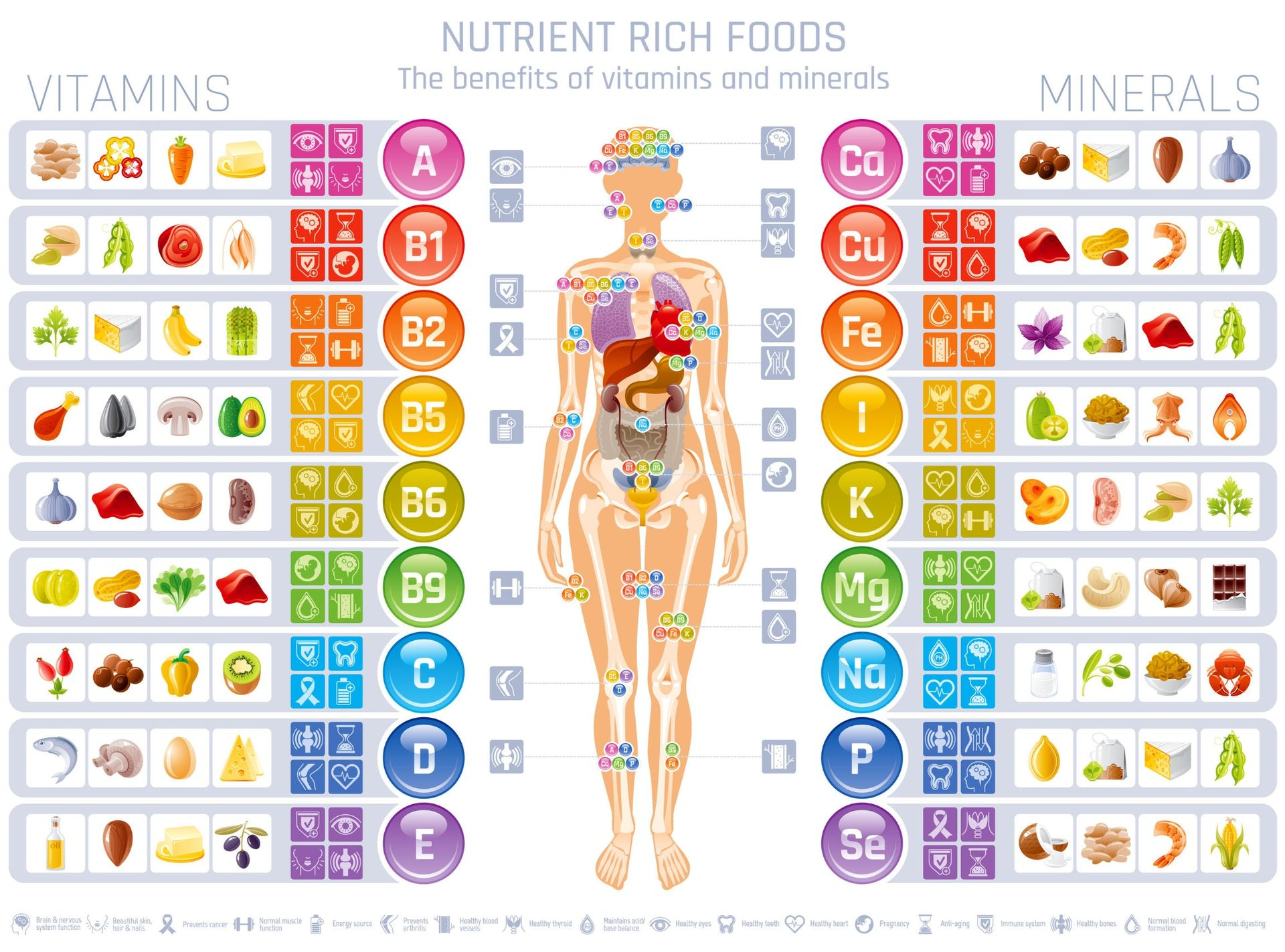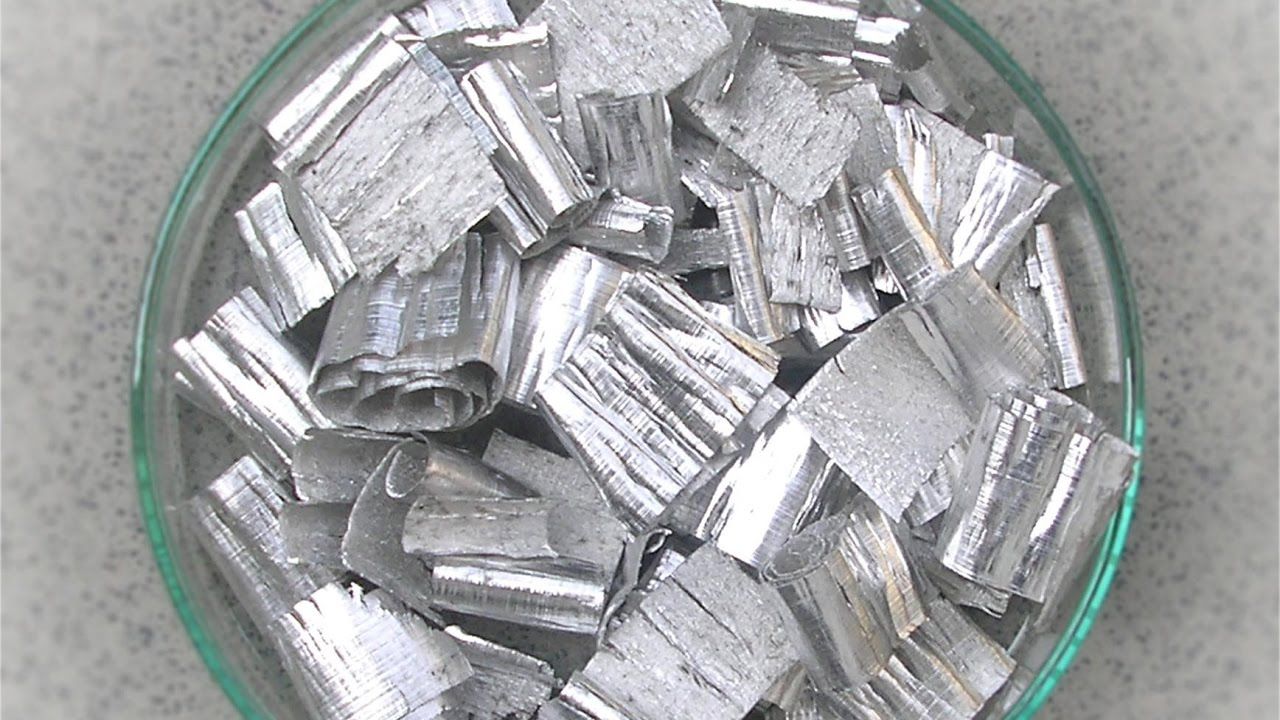Hair Tissue Mineral Analysis (HTMA) for the Whole Family
Unlock Vitality: Balance Minerals for Optimal Vitamin Absorption by Understanding Hair Tissue Mineral Analysis
Mineral balance matters: without the right cellular mineral ratios your body often can’t make full use of supplemental or dietary vitamins. A practical, evidence-informed tool to evaluate long-term mineral status is Hair Tissue Mineral Analysis — also called HTMA — which helps you identify mineral imbalances and environmental exposures so you can act with targeted food and supplement choices.
The HTMA provides a clear dietary road map based on biochemical data: it reveals which minerals your cells are low or high in and highlights toxic element exposure so you can choose the right foods and supplements to rebalance your body chemistry. This is lab-based, individualized information you can use to improve energy, digestion, hormone balance, and nutrient absorption.
Example: a client with fatigue and brittle nails had low zinc and magnesium on a hair report; after targeted food changes and supplementation (per the HTMA plan) they reported improved energy and stronger nails in about 3–4 months.
Scalp hair is the preferred sample for most people because it reflects recent months of mineral deposition. If your scalp hair is heavily dyed or chemically treated, follow the lab’s guidance (the lab referenced on this site may recommend an alternate sample site). For sample collection and exact quantity guidance, see: How much hair do you need? Click here to see a sample. (Follow the lab form instructions exactly and do not include payment details on the lab form.)
Ready to get started? Order your kit and lab form using the HTMA tab above — you’ll receive lab instructions, a prepaid mailing label (if provided), and a follow-up consultation to review your customized plan.
What Does Hair Mineral Analysis Measure?
After the laboratory completes your hair tissue mineral analysis we provide a clear, actionable report that typically includes graphs, numerical levels, and interpretive commentary. A standard package (confirm current scope with the lab) shows activity for approximately 37 elements and includes recommended diet and supplement guidance tailored to your profile, plus a follow-up consultation to review your results.
The HTMA test covers a wide spectrum of elements, typically grouped as follows:
- Nutrient elements: essential minerals such as calcium, magnesium, sodium, potassium, zinc and others that support enzyme systems, bone and muscle function, and overall health.
- Toxic elements: detection of heavy metals and other toxic metals — for example lead, mercury, cadmium and arsenic — that indicate past or chronic exposure.
- Trace and supporting elements: additional elements and trace elements (iron, copper, manganese, chromium, selenium, etc.) that influence metabolism, antioxidant defenses, and nutrient interactions.
Technical note (check with the lab): common laboratory methods used for hair mineral analysis include ICP-MS (inductively coupled plasma mass spectrometry) or AAS (atomic absorption spectrometry). If you want that detail in the public report, confirm which method the lab uses and include it for transparency.
A well-interpreted report paints a biochemical picture: it highlights nutrient strengths, identifies imbalances, and shows toxic metal patterns so you and your practitioner can design a targeted plan. To learn how to collect the proper hair sample and fill out the lab form, click the sample link on this page and follow the lab’s step-by-step instructions.
To proceed, print the HTMA lab form from the HTMA tab and complete only the fields highlighted in yellow. For your privacy and security, do not write credit card information on the lab form—use the secure checkout on the store page instead. For payment options and current pricing, click the "Buy Now" button on the product page. On checkout choose "Add to Bag" and complete payment; if you prefer to pay by check or money order, follow the instructions listed on the product page.

Dr. Johnny Speaks About the Importance of Mineral Tests
I learned the secrets of HTMA from Jim Davenport taught and I learned the secrets of food therapy from Hippocrates and Ancient Greek Medicine.
With a balance of diet, the cells create a high electrical out put which is one of the main ways to keep us from getting cancer.
The balance of minerals in the cells help make all the enzymes to keep our hormones in balance, whatever is missing we get from supplements from the lab.
Hair Mineral Testing for the Whole Family, Canine & Equine
We offer hair mineral testing for people and animals because mineral balance matters across species. Whether you’re ordering a test for a child with persistent fatigue, an adult seeking hormone balance, a canine athlete, or a performance horse, the test provides individualized information to guide nutrition and targeted supplements.
Dr. Johnny brings decades of experience working with Davenport Laboratories and Trace Elements (please verify exact affiliations and years on the About page). His team interprets each hair mineral analysis report and provides practical, food-first recommendations and a personalized supplement schedule when needed.
Why test more than once? As metabolism and diet change, cell chemistry shifts. We generally recommend follow up hair tissue mineral testing every six months to track progress and adjust recommendations — many clients see biochemical changes after about 4–6 months on a protocol, but timing should be individualized.
Who benefits from hair mineral testing?
- Individuals with chronic fatigue, digestive issues, or hormonal complaints
- Parents seeking nutrient and toxin screening for children
- Athletes and performance-focused pet owners (canine and equine) who want targeted nutrition
A few quick practical notes before you order:
- Order the kit and lab form, print the highlighted fields, and collect the sample per the instructions (scalp hair preferred).
- Mail the sample to the listed laboratory. Typical turnaround time is lab-dependent—confirm on the product page—but many results arrive within 1–3 weeks after the lab receives the sample.
- Once results are ready, you’ll receive a detailed report and a scheduled consultation to review findings and next steps.
If you’d like, click the HTMA tab now to order or to request clarification on which specific panel (human, canine, equine) is right for you or your animal. For any pet testing, please consult your veterinarian about health history and ongoing treatments before changing diets or supplements based on the report.

What Makes HTMA So Valuable?
Hair mineral testing (a form of hair tissue mineral analysis) is a safe, non‑invasive way to measure the mineral content of hair and build a time‑averaged picture of your biochemical status. As hair grows, minerals and toxic metals are deposited in the shaft, creating a multi‑week to multi‑month record of nutritional status and environmental exposure—information often not visible in a single blood draw.
Why is hair preferred over blood?
- Easy, painless collection—no blood draw required.
- Time‑averaged record of mineral deposition—captures trends over weeks/months that single blood tests may miss.
- Many elements concentrate more in hair than in blood, improving detection sensitivity for chronic imbalances or low‑level exposures.
- Hair testing is used in environmental exposure assessments; some regulatory and research bodies reference hair for certain toxic metal monitoring—confirm specific guidance for clinical use.
HTMA is invaluable for:
- Detecting nutrient imbalances and accumulation of toxic elements.
- Assessing metabolic trends and cellular enzyme activity inferred from mineral ratios.
- Guiding targeted dietary and supplement recommendations tailored to your profile.
Limitations and best practices
HTMA is highly useful for revealing chronic mineral imbalances and low‑level metal accumulation, but it is not a substitute for emergency medical testing for acute poisoning. For acute clinical concerns (for example suspected recent heavy metal ingestion), blood and urine testing are standard. Always review significant toxic metal findings with a qualified clinician and confirm testing methods (e.g., ICP‑MS or AAS) with the laboratory.
Quick keywords
- hair mineral analysis — identifies mineral and trace element patterns
- hair mineral testing — noninvasive screening for chronic imbalances and exposures
- blood tests — better for acute or clinical diagnostics; use alongside HTMA when appropriate
HTMA for Dogs
Whether your dog competes in agility, serves as a working service animal, or is a beloved family pet, targeted nutrition matters. Our HTMA (hair tissue mineral analysis) for canines provides a noninvasive window into your dog's cellular mineral status and potential toxic metal burden so you can optimize diet and performance.
How it works for dogs (quick steps):
- Order the Canine hair mineral testing kit and download the lab form.
- Collect a clean hair sample (follow lab instructions; typically a small clump of fur clipped close to the skin from the nape or flank) and label it.
- Mail to the lab. Turnaround time varies by lab—expect roughly 1–3 weeks after receipt.
- Receive a canine-specific report and a tailored nutrition/supplement plan; consult with your veterinarian as needed.
Case example: An agility dog with recurring hoof issues and low stamina tested low in zinc and magnesium on a canine HTMA. After a focused diet change and supplements recommended from the report, the owner reported improved hoof quality and better recovery within four months (individual results vary).
Dr. Johnny provides the lab forms and clear collection instructions with each purchase. You can order the Canine hair mineral analysis kit from the same HTMA tab used for human kits—confirm current price on the product page (pricing is subject to change). For any actionable changes to diet or supplementation, we recommend discussing the plan with your veterinarian, especially for dogs on medication or with chronic conditions.

Hair Mineral Analysis for Horses
Whether you’re preparing a competitor for the Breeder's Cup or simply want a healthier, happier mount, targeted nutrition and mineral balance are essential. Hair mineral analysis for horses helps owners and trainers identify cellular mineral shortages, toxic metal burdens, and nutrient interactions that affect performance, recovery, and long‑term health.
When cellular minerals are out of balance in horses, several common signs can emerge. These often relate to the musculoskeletal system, behavior, immunity, and metabolic function:
Signs of mineral-related problems
- Unhealthy or brittle hooves
- Nervousness, poor focus, or behavioral changes
- Slow wound healing and lower resistance to infection
- Muscle soreness, stiffness, or poor recovery after work
How HTMA helps horses
An equine hair mineral report shows nutrient levels, identifies toxic metal accumulation (alerting to possible heavy metal toxicity), and reveals mineral ratios that relate to metabolic and muscle function. With that data a targeted feeding and supplement plan can be created to support hoof integrity, muscle performance, and overall immunity.
Important: HTMA is a valuable screening and management tool, but it is not a replacement for veterinary diagnosis. Always review significant findings with your veterinarian, especially if the report indicates high toxic metal toxicity or serious metabolic concerns.

Common equine issues HTMA can inform
- DSLD and tendon/ligament health (nutrient support strategies)
- Metabolic disease risk factors (Cushing's/IR monitoring) — HTMA may flag mineral patterns associated with metabolic tendencies, but diagnostic testing by a vet is essential.
- Equine Polysaccharide Storage Myopathy (EPSM/EPSSM) — nutritional balance can support muscle function; include vet diagnostics as part of care.
Practical notes & sample guidance
- Typical sample: mane or tail hair (follow the lab form for exact collection site and quantity).
- Turnaround: lab-dependent; confirm the current timeframe on the product page (often 1–3 weeks after receipt).
- Follow-up: a tailored supplement and feeding plan is provided with the report; retesting every ~6 months helps track progress.
Dr. Johnny will supply the equine lab forms and collection instructions when you order the Equine HTMA. Please consult your veterinarian before making diet or supplement changes based on the report, especially for horses with existing medical conditions.
All HTMAs provide a comprehensive report with graphs and numerical results showing roughly 37+ minerals and toxic metals. Each profile is interpreted to reveal biochemical trends, nutrient strengths and weaknesses, and any abnormal levels that may explain symptoms or health concerns.
With detailed analytical data you receive a customized supplement and dietary plan designed to rebalance minerals, support detoxification of toxic metals, and improve overall health. Following the protocol typically helps the body gradually clear toxins and restore better metabolic function for people, dogs, or horses.
Dr. Johnny provides the lab forms and sample collection instructions when you order. You can purchase the Equine HTMA from the HTMA tab (confirm current price on the product page).
What to expect next
- Collect and mail your sample per the lab instructions (sample anonymization and chain‑of‑custody are handled by the lab).
- Typical turnaround is lab‑dependent—confirm the current timeframe on the product page; many reports arrive within 1–3 weeks after lab receipt.
- You receive a detailed report with graphs and a scheduled consultation to review results and next steps.
Frequently Asked Questions About Hair tissue Mineral Analysis (HTMA)
What is Hair Tissue Mineral Analysis (HTMA) and how does it differ from blood tests?
HTMA analyzes minerals and trace elements deposited in hair, giving a time‑averaged record of nutritional status and environmental exposure. Blood tests measure current circulating levels and are better for acute or clinical diagnostics. HTMA complements (does not replace) blood tests—confirm the lab method (ICP‑MS or AAS) if you need technical detail.
How do I collect a hair sample for hair mineral analysis?
Follow the lab form instructions: use clean scissors, clip recommended amount close to the scalp (or specified site), place dry in the provided envelope, label, and mail. If scalp hair is chemically treated, follow lab guidance on alternate sites. Do not write payment or card details on the lab form.
What elements are tested in a standard hair mineral report?
A typical panel includes nutrient elements (calcium, magnesium, zinc, etc.), toxic metals (heavy metals like lead and mercury), and other trace elements—about 37+ elements depending on the lab.
How long does it take to get results and a report?
Turnaround is lab‑dependent—commonly 7–21 business days after the lab receives your sample. Most packages include a scheduled consultation (often about one hour) to review the report.
Can hair mineral testing detect heavy metal toxicity and exposure?
HTMA can indicate past or chronic metal accumulation (lead, mercury, cadmium, arsenic). It’s useful for screening but not ideal for diagnosing acute poisoning—follow up with blood/urine testing and clinical care if acute toxicity is suspected.
Will HTMA tell me which vitamins or nutrients I am deficient in?
HTMA reveals mineral imbalances that often correlate with nutrient needs and can inform dietary and supplement advice. For specific vitamin deficiencies, targeted blood assays may still be recommended.
Is HTMA reliable for my child, dog, or horse?
Yes—HTMA is used across humans and animals (as described on this site). Interpretation differs by species; consult a pediatrician for children and your veterinarian for pets and horses before implementing major changes.
How often should I repeat hair mineral analysis?
We commonly recommend retesting every ~6 months to track biochemical changes and adjust protocols, since meaningful shifts often appear after 4–6 months; individual timing should be personalized.
Will HTMA results tell me what supplements or food changes to make?
Yes—your report includes targeted food and supplement recommendations to rebalance minerals. Follow recommendations under professional supervision, especially for pets and those on medications.
Is hair testing accepted by medical or regulatory bodies?
Hair testing is used in environmental exposure assessment and referenced in some research and regulatory contexts for certain toxic metals; acceptance varies by use case. For clinical diagnosis, pair HTMA with conventional medical tests as advised by your clinician.
Still have questions? Book a consultation to review whether hair mineral analysis is right for you or your animal, and to discuss next steps after your results.






